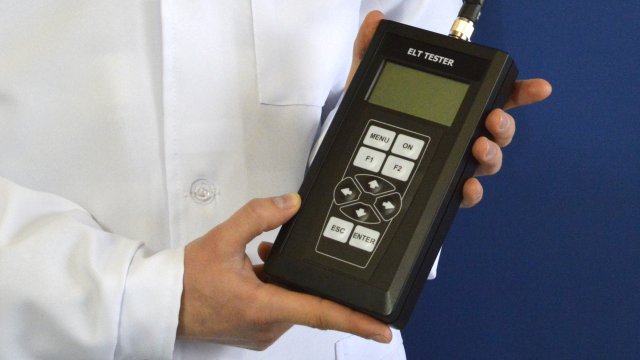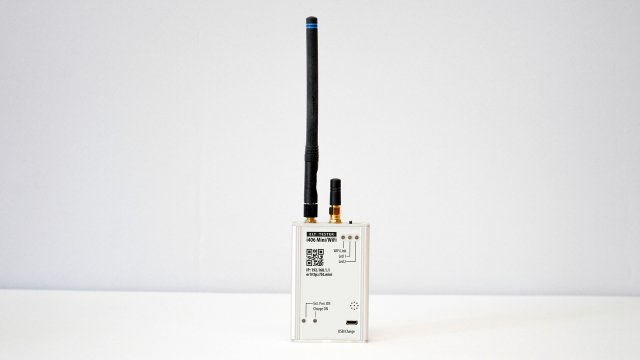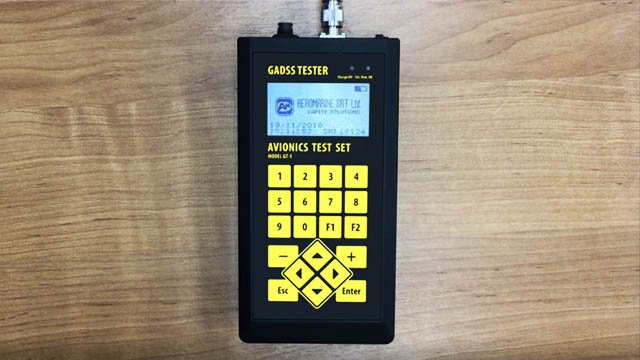Distress Beacon Testing
All Cospas-Sarsat type approved 406 MHz beacons include a self-test mode of operation. The content of the self-test message always provides the beacon 15 Hex ID, except for location protocol beacons when they are transmitting a self-test message encoded with a GNSS position. The transmission of a self-test GNSS position is optional.
The complete self-test transmission is limited to one burst and is activated by a separate switch position.
The self-test function performs an internal check and indicates that RF power is being emitted at 406 MHz and at 121.5 MHz, if applicable. The beacon will provide an indication of the success or failure of a GNSS self-test. The self-test mode signal is not processed by the satellite equipment.
The manufacturers’ instructions on the frequency of performing a self-test and transmission of a self-test GNSS position should be adhered to. This will limit the likelihood of inadvertent activation and battery depletion.
The 406 MHz EPIRB and PLB beacon standard requires that the 121.5/243 MHz transmission during the self-test is restricted to just one second.
There is test equipment available that can facilitate the testing of 406 MHz beacons in the self-test mode and provide technical information on the beacon transmission.
This equipment is intended to be used by ship and aircraft inspectors and beacon maintenance personnel.
The self-test function should accommodate most beacon testing. However, there are some occasions when operational testing may be required. These occasions should be limited to the absolute minimum as they impact the Cospas-Sarsat system.
Other than performing a 406 MHz beacon self-test for evaluating key beacon performance characteristics to ensure operational functionality, other reasons for activating a beacon include:
- Prototype beacon testing;
- New beacon models testing;
- Search and rescue training exercises; and
- Cospas-Sarsat ground segment equipment performance.
Beacons activated in the operational or live mode (not using the self-test function) impacts the Cospas-Sarsat space and ground segments and Rescue Coordination Centres (RCCs) worldwide and may inhibit the processing of genuine distress beacon alerts, therefore delaying a response to a distress situation.
Regardless of the beacon’s location or the duration of the activation, a 406 MHz beacon will be detected by at least one Geostationary Local User Terminal (GEOLUT) and it might also be detected by every Low Earth Orbit Local User Terminal (LEOLUT) in the Cospas-Sarsat system.
Furthermore, the 121.5 MHz homing signal transmitted during the 406 MHz beacon activation will be heard by overflying aircraft which may impact genuine distress alerts, RCCs and may impact air traffic services at airports.
Given the reasons above there is a need to ensure that beacon testing is undertaken responsibly. Comprehensive coordination will need to be undertaken to ensure that all Cospas-Sarsat Mission Control Centres (MCCs) around the world are informed of any operational beacon testing as well as the local RCC.
Operational testing of 406 MHz beacons can be performed in screened enclosures to eliminate the risk of false alerts and with the use of test equipment the beacons’ performance can be assessed. This type of testing would normally be undertaken by manufacturers, suppliers and other beacon maintenance staff.
There may be occasions when a compelling argument may be put forward by beacon manufacturers, suppliers and the like to allow operational testing of a 406 MHz beacon without a change to the beacon protocol or the disabling of the 121.5/243 MHz homing transmitter. Such exceptional requests will be considered on their merits and the following points should be noted:
-the test will be limited in duration (not more than 15 minutes);
-the objective of the test can be met with very limited beacon bursts being detected by the GEO system;
-RCC has given clearance for the 121.5/243 MHz transmission;
-the location of the test in latitude and longitude must be provided;
-the timing will be dependent upon mutual visibility between the beacon, the LEO satellite and LEOLUT;
-provision of the information in section 7, including the Cospas-Sarsat type approval certificate number;
-two days notice to be provided and;
-the test strategy and the feedback (reports, distress alert, raw LUT data, etc) required has been discussed with AMSA’s Cospas-Sarsat Adviser.
AIRCRAFT COCKPIT REMOTE ACTIVATION SWITCHES AND OPERATIONAL TESTING BY AIRCRAFT MAINTENANCE FACILITIES
Whilst a functional test of a beacon can be performed via the beacon’s self-test capability the use of the remote aircraft cockpit activation switches results in an operational activation of the ELT. Remote cockpit activations are performed on initial installation and during ongoing maintenance of the ELT.
In order to comply with these ELT maintenance requirements, operational testing of a 406 MHz ELT from the cockpit of an aircraft may be undertaken by maintenance facilities, provided the test duration is no longer than 5 seconds and is undertaken within the first 5 minutes of the hour. RCC and the Air Traffic Services (ATS) Centre for the location of the test must be advised of this operational test.
The test duration must be restricted to 5 seconds so that there is no potential for an operationally coded 406 MHz digital burst transmitting and thus generating a false alert. The duration of the 121.5/243 MHz homing transmission, which will also be activated as part of this test, must also be restricted so as not to generate false alerts via ATS.
406MHz ELT Tester

406 MHz / 243 MHz / 121.5 MHz ELT TESTER (ELTT-124 Test set) is designed to check the avionics emergency locator transmitters (ELT) operating via COSPAS-SARSAT system. Complies with USA (FAA Part 91.207), Canada (CAR 571 Appendix G), Europe (CAA/EuroCAE) requirements.
ELT Tester Mini Wi-Fi

ELT Tester Mini Wi-Fi is third generation device designed to check the avionics emergency locator transmitters (ELT) operating via COSPAS-SARSAT system. Tester is operating with any mobile phone or desktop PC by means of Wi-Fi connection.


